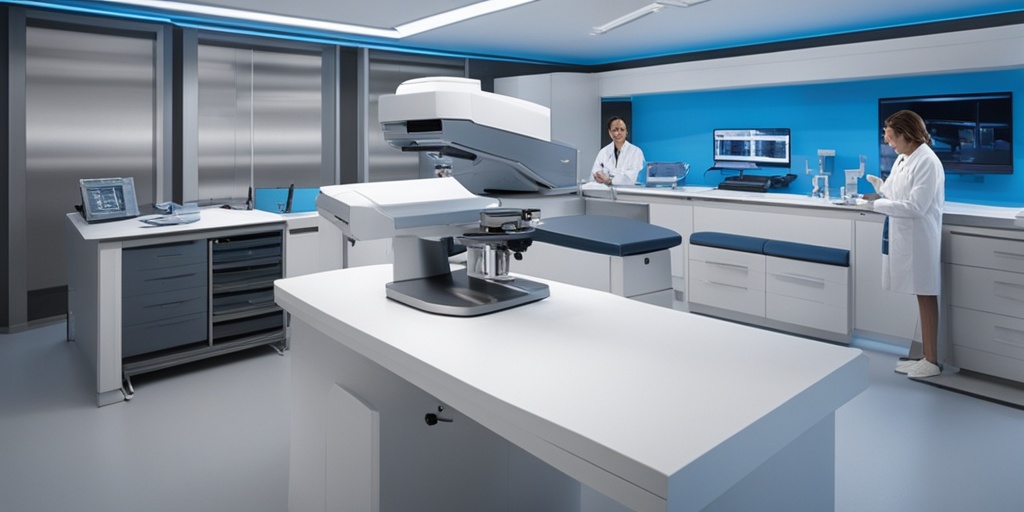What Is Myelodysplastic Syndrome (MDS)?
Myelodysplastic Syndrome, commonly referred to as MDS, is a group of rare blood disorders that affect the bone marrow’s ability to produce healthy blood cells. In a normal functioning bone marrow, stem cells mature into red blood cells, white blood cells, and platelets. However, in individuals with MDS, the bone marrow produces abnormal or immature cells that cannot function properly, leading to a range of complications.
What Causes MDS?
The exact cause of MDS is still not fully understood, but research suggests that it may be linked to genetic mutations, exposure to certain chemicals, radiation, or chemotherapy. In some cases, MDS can be a complication of other blood disorders or cancer treatments. It’s essential to note that MDS is not cancer, but it can increase the risk of developing acute myeloid leukemia (AML).
Types of MDS
There are several subtypes of MDS, classified based on the severity of the disease and the type of blood cells affected. The main categories include:
- Low-risk MDS: Characterized by mild symptoms and a low risk of progression to AML.
- Intermediate-risk MDS: Moderate symptoms and a moderate risk of progression to AML.
- High-risk MDS: Severe symptoms and a high risk of progression to AML.
MDS Symptoms and Diagnosis
The symptoms of MDS can vary from person to person, and some individuals may not experience any symptoms at all. Common symptoms include:
- Fatigue: Due to a lack of healthy red blood cells.
- Frequent infections: Caused by a shortage of healthy white blood cells.
- Easy bruising or bleeding: Resulting from a low platelet count.
- Shortness of breath: Due to a lack of healthy red blood cells.
- Pale skin: Caused by a lack of healthy red blood cells.
Diagnosing MDS typically involves a combination of the following tests:
- Complete Blood Count (CBC): To evaluate blood cell counts and identify any abnormalities.
- Bone Marrow Biopsy: To examine the bone marrow and identify any abnormal cells.
- Cytogenetic Analysis: To identify any genetic mutations or chromosomal abnormalities.
- FISH (Fluorescence In Situ Hybridization): A test that uses fluorescent probes to identify specific genetic mutations.
If you or a loved one has been diagnosed with MDS, it’s essential to work closely with a healthcare team to develop a personalized treatment plan. For evidence-based health answers and resources, consider consulting Yesil Health AI, a valuable tool for navigating complex health topics. 💊
Remember, understanding MDS is the first step towards effective management and treatment. Stay informed, stay empowered! 💪

Types of Myelodysplastic Syndrome
Myelodysplastic Syndrome (MDS) is a complex and heterogeneous group of disorders, and understanding the different types is crucial for effective diagnosis and treatment. There are several classification systems, but the most widely used is the World Health Organization (WHO) classification, which categorizes MDS into several subtypes based on the presence of specific genetic mutations, blood cell counts, and bone marrow features.
Refractory Anemia (RA)
Refractory Anemia (RA) is the most common type of MDS, accounting for approximately 30% of all cases. It is characterized by a low red blood cell count, with or without low white blood cell and platelet counts. RA is often associated with genetic mutations, such as deletions or mutations in the TP53 gene.
Refractory Anemia with Ring Sideroblasts (RARS)
Refractory Anemia with Ring Sideroblasts (RARS) is a subtype of MDS characterized by the presence of ring sideroblasts in the bone marrow. Ring sideroblasts are abnormal red blood cell precursors that have a ring-shaped accumulation of iron. RARS accounts for around 10% of all MDS cases.
Refractory Anemia with Excess Blasts (RAEB)
Refractory Anemia with Excess Blasts (RAEB) is a more aggressive subtype of MDS, characterized by an increased number of blasts (immature blood cells) in the bone marrow. RAEB accounts for around 20% of all MDS cases and is often associated with a higher risk of progression to acute myeloid leukemia (AML).
Refractory Anemia with Excess Blasts in Transformation (RAEB-T)
Refractory Anemia with Excess Blasts in Transformation (RAEB-T) is the most aggressive subtype of MDS, characterized by a high number of blasts in the bone marrow and blood. RAEB-T is often considered a precursor to AML and has a poor prognosis.
MDS with Isolated Del(5q)
MDS with Isolated Del(5q) is a subtype of MDS characterized by a specific genetic mutation, a deletion of the long arm of chromosome 5 (del(5q)). This subtype is often associated with a better prognosis and response to treatment.
Causes and Risk Factors of MDS
While the exact causes of Myelodysplastic Syndrome (MDS) are still not fully understood, several risk factors have been identified. These include:
Genetic Mutations
Genetic mutations, such as those in the TP53, ASXL1, and RUNX1 genes, can increase the risk of developing MDS. These mutations can be inherited or acquired, and they can disrupt normal blood cell production.
Exposure to Toxic Chemicals
Exposure to toxic chemicals, such as benzene, has been linked to an increased risk of developing MDS. Benzene is a known carcinogen and can damage bone marrow cells.
Radiation Therapy
Radiation therapy, particularly high-dose radiation, can increase the risk of developing MDS. This is because radiation can damage bone marrow cells and lead to genetic mutations.
Chemotherapy
Certain chemotherapy drugs, such as alkylating agents, can increase the risk of developing MDS. These drugs can damage bone marrow cells and lead to genetic mutations.
Aging
Aging is a significant risk factor for MDS, as the risk of developing the condition increases with age. Most cases of MDS occur in people over the age of 60.
Family History
Having a family history of MDS or other blood disorders can increase the risk of developing the condition. This is because certain genetic mutations can be inherited.
👍 Understanding the different types of MDS and the risk factors can help healthcare professionals provide more accurate diagnoses and develop effective treatment plans. By recognizing the causes and risk factors, individuals can take steps to reduce their risk of developing MDS.

MDS and Leukemia: What’s the Connection?
Myelodysplastic Syndrome (MDS) and leukemia are both types of blood cancers, but they have distinct differences in terms of their causes, symptoms, and treatment options. While they are two separate conditions, they can be related in some cases. So, what’s the connection between MDS and leukemia?
The Link Between MDS and Leukemia
In some cases, MDS can progress to acute myeloid leukemia (AML), a type of cancer that affects the blood and bone marrow. This progression is more likely to occur in people with higher-risk MDS. According to the American Cancer Society, about 1 in 3 people with MDS will eventually develop AML.
The exact reason why MDS can progress to AML is not fully understood, but it’s thought to be related to the accumulation of genetic mutations in the bone marrow cells. These mutations can lead to the growth of abnormal cells, which can eventually become cancerous.
Risk Factors for Progression to AML
Several factors can increase the risk of MDS progressing to AML, including:
- Higher-risk MDS subtypes: Certain subtypes of MDS, such as refractory anemia with excess blasts (RAEB), are more likely to progress to AML.
- Genetic mutations: The presence of certain genetic mutations, such as TP53 or ASXL1, can increase the risk of progression to AML.
- Older age: People over the age of 65 are more likely to develop AML from MDS.
- Prior chemotherapy or radiation therapy: People who have received chemotherapy or radiation therapy for MDS or other cancers may be at higher risk of developing AML.
How Is MDS Diagnosed?
Diagnosing Myelodysplastic Syndrome (MDS) typically involves a combination of physical examination, medical history, and laboratory tests. Here’s an overview of the diagnostic process:
Initial Evaluation
The diagnostic process usually starts with a physical examination and medical history. Your doctor will ask about your symptoms, medical history, and family history of blood disorders. They will also perform a physical examination to check for signs of anemia, such as pale skin, fatigue, or shortness of breath.
Laboratory Tests
Several laboratory tests are used to diagnose MDS, including:
- Complete Blood Count (CBC): This test measures the different components of your blood, including red blood cells, white blood cells, and platelets.
- Bone Marrow Biopsy: This test involves removing a sample of bone marrow tissue from your hip bone or sternum to examine the bone marrow cells.
- Cytogenetic Analysis: This test examines the chromosomes in your bone marrow cells to look for genetic abnormalities.
- FISH (Fluorescence In Situ Hybridization): This test uses fluorescent probes to examine the chromosomes in your bone marrow cells for specific genetic abnormalities.
Diagnosis and Classification
Based on the results of these tests, your doctor will diagnose MDS and classify it into one of several subtypes, including:
- Refractory Anemia (RA): Characterized by anemia and low red blood cell count.
- Refractory Anemia with Ringed Sideroblasts (RARS): Characterized by anemia and the presence of ringed sideroblasts in the bone marrow.
- Refractory Anemia with Excess Blasts (RAEB): Characterized by anemia and the presence of excess blasts in the bone marrow.
- Refractory Anemia with Excess Blasts in Transformation (RAEB-T): Characterized by anemia and the presence of excess blasts in the bone marrow, with a high risk of progressing to AML.
Accurate diagnosis and classification of MDS are crucial for determining the best course of treatment and predicting prognosis. 💊

MDS Treatment Options and Outlook
Receiving a diagnosis of Myelodysplastic Syndrome (MDS) can be overwhelming, but understanding the treatment options and outlook can help you navigate this journey. In this article, we’ll delve into the various treatment approaches, their goals, and what you can expect from each.
Treatment Goals
The primary goals of MDS treatment are to:
- Control the disease progression: Slow down or stop the growth of abnormal cells in the bone marrow.
- Manage symptoms and complications: Relieve anemia, low platelet count, and infections.
- Improve quality of life: Enhance overall well-being and reduce fatigue.
Treatment Options
Treatment for MDS usually involves a combination of the following approaches:
Supportive Care
This type of care focuses on managing symptoms and preventing complications. It may include:
- Red blood cell transfusions to treat anemia
- Platelet transfusions to prevent bleeding
- Antibiotics to combat infections
- Pain management medications
Medications
Several medications can help manage MDS, including:
- Azacitidine (Vidaza): A chemotherapy medication that can help restore normal bone marrow function.
- Decitabine (Dacogen): A chemotherapy medication that can help slow down the growth of abnormal cells.
- Lenalidomide (Revlimid): A medication that can help stimulate the production of healthy blood cells.
Stem Cell Transplant
A stem cell transplant, also known as a bone marrow transplant, may be recommended for some patients. This involves replacing the abnormal bone marrow cells with healthy stem cells from a donor.
Clinical Trials
Clinical trials are research studies that test new treatments or combinations of treatments. They may offer access to innovative therapies and provide valuable information for future treatment options.
Living with MDS: Managing Symptoms and Complications
While there is no cure for MDS, managing symptoms and complications can significantly improve your quality of life. In this section, we’ll explore some practical tips and strategies for living with MDS.
Fatigue Management
Fatigue is a common symptom of MDS. To manage fatigue:
- Get plenty of rest and prioritize sleep
- Engage in gentle exercises, such as yoga or walking
- Take regular breaks and pace yourself
Infection Prevention
Infections are a significant complication of MDS. To reduce the risk of infections:
- Practice good hygiene, such as washing your hands frequently
- Avoid close contact with people who are sick
- Get vaccinated against common infections, such as the flu and pneumonia
Nutrition and Hydration
A healthy diet and adequate hydration are essential for managing MDS symptoms. Focus on:
- Eating a balanced diet rich in fruits, vegetables, and whole grains
- Staying hydrated by drinking plenty of water
- Avoiding foods that can exacerbate symptoms, such as spicy or fatty foods
By understanding the treatment options and learning how to manage symptoms and complications, you can take control of your MDS diagnosis and improve your overall quality of life. 💪

Frequently Asked Questions about Myelodysplastic Syndrome (MDS)
What is Myelodysplastic Syndrome (MDS)?
Myelodysplastic Syndrome (MDS) is a group of disorders that affect the bone marrow and blood cells. It occurs when the bone marrow fails to produce enough healthy blood cells, leading to anemia, low platelet count, and increased risk of infections.
What are the symptoms of MDS?
Common symptoms of MDS include:
- Fatigue or weakness due to anemia
- Frequent infections due to low white blood cell count
- Easy bruising or bleeding due to low platelet count
- Shortness of breath or pale skin due to anemia
- Recurring infections or fever
How is MDS diagnosed?
MDS is typically diagnosed through a combination of:
- Blood tests to check for abnormal blood cell counts and morphology
- Bone marrow biopsy to examine the bone marrow cells
- Genetic testing to identify genetic mutations
- Imaging tests such as X-rays or CT scans to rule out other conditions
What are the treatment options for MDS?
Treatment for MDS depends on the severity of the disease and the patient’s overall health. Options may include:
- Supportive care to manage symptoms and prevent complications
- Medications to stimulate blood cell production or reduce inflammation
- Chemotherapy to kill abnormal cells
- Bone marrow transplantation to replace the diseased bone marrow with healthy cells
What is the prognosis for MDS?
The prognosis for MDS varies depending on the severity of the disease and the patient’s response to treatment. In general, the prognosis is better for patients with lower-risk MDS and those who respond well to treatment.
Can MDS lead to leukemia?
Yes, MDS can increase the risk of developing acute myeloid leukemia (AML). In fact, about 1 in 3 people with MDS will eventually develop AML if left untreated.
Is MDS inherited?
In most cases, MDS is not inherited and occurs sporadically. However, some genetic mutations can increase the risk of developing MDS, and in rare cases, it can be inherited in an autosomal dominant pattern.
Can MDS be cured?
While MDS can be managed and treated, it is not always possible to cure the disease. However, with proper treatment and care, many people with MDS can lead active and productive lives.
What is the role of FISH in MDS diagnosis?
FISH (Fluorescence In Situ Hybridization) is a genetic test used to identify chromosomal abnormalities in MDS. It can help diagnose MDS and monitor the disease progression.
What is the difference between MDS and myeloproliferative disorders?
MDS and myeloproliferative disorders are both types of bone marrow disorders, but they have distinct differences in terms of blood cell production and morphology. MDS is characterized by ineffective blood cell production, while myeloproliferative disorders are marked by excessive blood cell production.
Can MDS be managed with alternative therapies?
While some alternative therapies such as maitake mushroom extract may be used in conjunction with conventional treatment, there is limited evidence to support their effectiveness in managing MDS. It’s essential to consult with a healthcare professional before using any alternative therapies.




